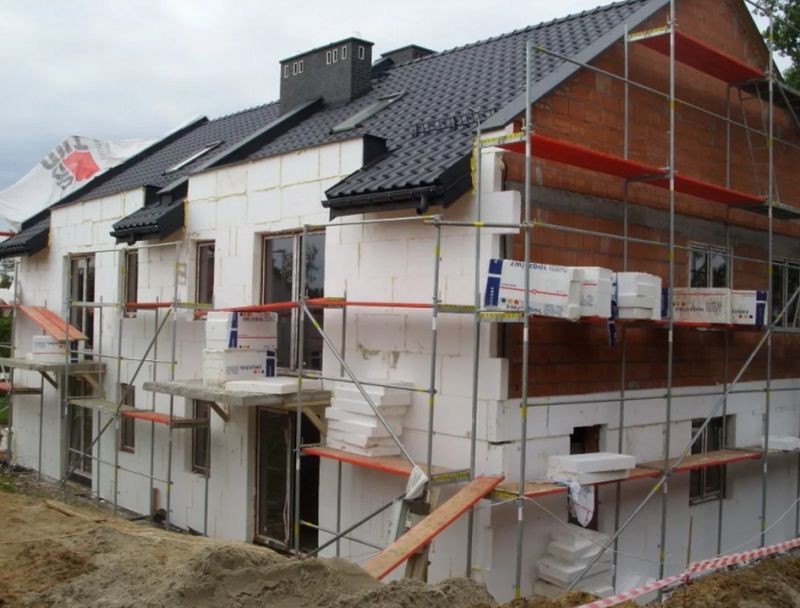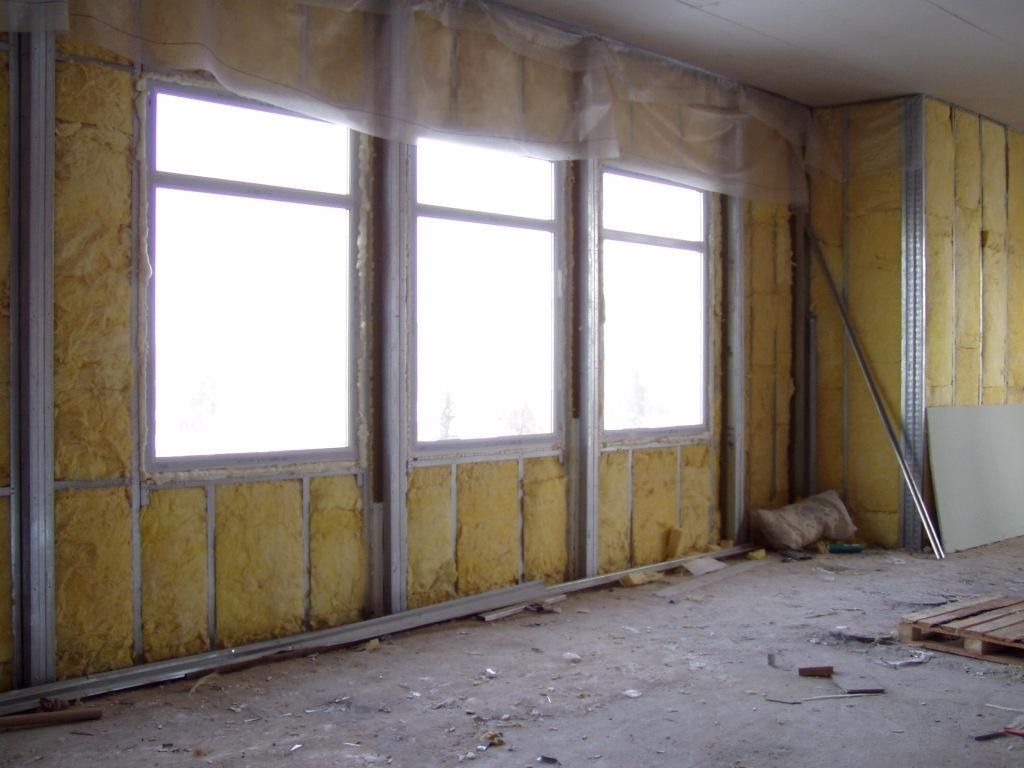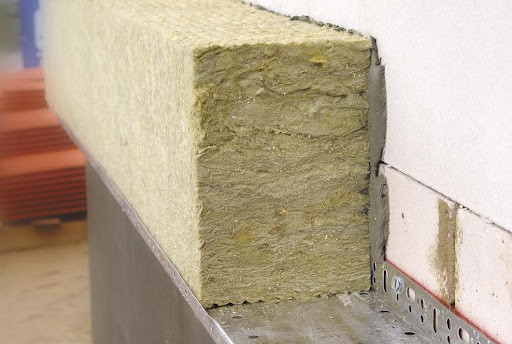How and with what to insulate a house?
Insulation of buildings from the outside or inside allows you to achieve a comfortable temperature inside the building, as well as save utility bills. This can be done in different ways, each of them has its own characteristics that must be taken into account before carrying out the work.
Insulation of the house from the outside
External house insulation is chosen because of:- insignificant cost of material and work;
- excellent energy saving, which can reduce heating costs by up to 60%;
- creation of an aesthetic and durable facade;
- improving the indoor climate, which has a positive effect on the quality of life;
- creating a thermos effect, so that the air in the room will heat up more slowly in summer and cool down in winter;
- protection of the wall from freezing;
- keeping the floor space unchanged, which cannot be said about the insulation of the house from the inside.

How can you insulate a house from the outside?
The most popular materials used for external insulation are:
Softened polystyrene. Its advantages include low weight and cost, and a minimum level of moisture absorption. However, it is not able to withstand direct sunlight and high temperatures, and instantly collapses under the influence of solvents and gasoline. In addition, it often becomes a place of settlement for mice. Due to its low vapor permeability, expanded polystyrene is not suitable for insulating a wall made of «breathable» material.
- Extruded polystyrene foam. The material consists of polystyrene granules with the addition of graphite, which makes it more durable and provides energy-saving properties. Its advantages also include environmental friendliness, ease of installation and resistance to mechanical stress. This makes it possible to use extruded polystyrene foam for 30 years or more. Its disadvantages are the same as those of conventional expanded polystyrene.
- Polyurethane foam. A material with a foam-cellular structure that is created from plastics. This makes it an excellent thermal insulator. A high level of adhesion allows it to be used to create a sealed coating on any surface. The advantages of polyurethane foam are resistance to fungus, high humidity and high temperatures, and high sound insulation properties. The material is suitable for insulating complex structures and frame buildings due to its installation with a hose and compressor. It is the need to use additional equipment and the high cost of the material that have become the main disadvantages of polyurethane foam.
- Stone or basalt wool made from rock stone. The minimum density and fiber structure of the material give it minimal thermal conductivity. But despite this, stone wool is resistant to combustion and is characterized by the ability to "breathe". Due to its high vapor permeability, it can be used for insulation of a frame house. The disadvantages of this type of insulation include the need to create a moisture-proof layer and mandatory fixation, as well as a low level of strength, so over the years it begins to deteriorate.
- Polyurethane foam. It is used for sprayed insulation or as a board and mounting foam. It is not recommended for use on wet facades, as the material can easily come off.
- Ecowool — consists of cellulose fibers. It is used for spraying on a wall with a batten or to fill the space between the cladding and the wall.
Inside insulation of the house
Insulation of the house from the inside is less common. Usually, these are cases when external insulation is prohibited by local authorities if the wall is at the junction of two buildings or goes into an elevator shaft.
When choosing how to insulate a house, you need to consider that internal thermal insulation can:
- Reduce the floor space.
- Cause high humidity in the room or the formation of fungus on the walls. This can happen if the insulation installation technology is violated. To avoid troubles, it is important to protect the material from condensation and think about reliable ventilation in the room. In addition, for its implementation, it is necessary to carefully prepare the room — remove or protect the furniture. And all insulation work must be entrusted to professionals.

Choosing a material for insulation
When choosing how to insulate a house inside, you need to pay attention to the following materials:
- foam;
- extruded polystyrene foam;
- mineral wool;
- Glass wool.
Foam
The material has an affordable cost and is considered quite effective. The thickness of its sheets can be different. A thickness of 5 cm is optimal for internal wall insulation. This will allow for quick installation without the need to use special tools.
The disadvantages of foam are called:
- flammability;
- minimum sheet strength;
- unsatisfactory vapor permeability, which can lead to a sauna effect in the room.
Extruded polystyrene foam
The material is very similar to expanded polystyrene, but has a yellow tint. It is also stronger and more durable, but it is impervious to moisture and is flammable. Therefore, its use is also possible only after the organization of a forced ventilation system.Mineral wool
Mineral wool is used as a heater quite often. In this case, preference should be given to basalt mineral wool. It is easy to install, durable and resistant to combustion. In addition, it has an affordable price.
But due to the low moisture resistance, it is recommended to use mineral wool very carefully. This is due to the fact that if the material absorbs a significant amount of water, it simply ceases to perform its functions. To protect the insulation from moisture, it is important to use waterproofing on the side of the cold wall and provide vapor barrier.
Glass wool
Unlike mineral wool, this material is able to transmit heat, so its cost is much lower. Also, glass wool has a number of disadvantages, including the need to use a protective structure and a protective suit during installation, since the material crumbles very much.
Conclusions
The wall of the house can be insulated both from the outside and from the inside. In addition, the methods can be combined. This allows you to solve a lot of problems — make the indoor climate more favorable for life, as well as significantly save on utility bills or energy costs.